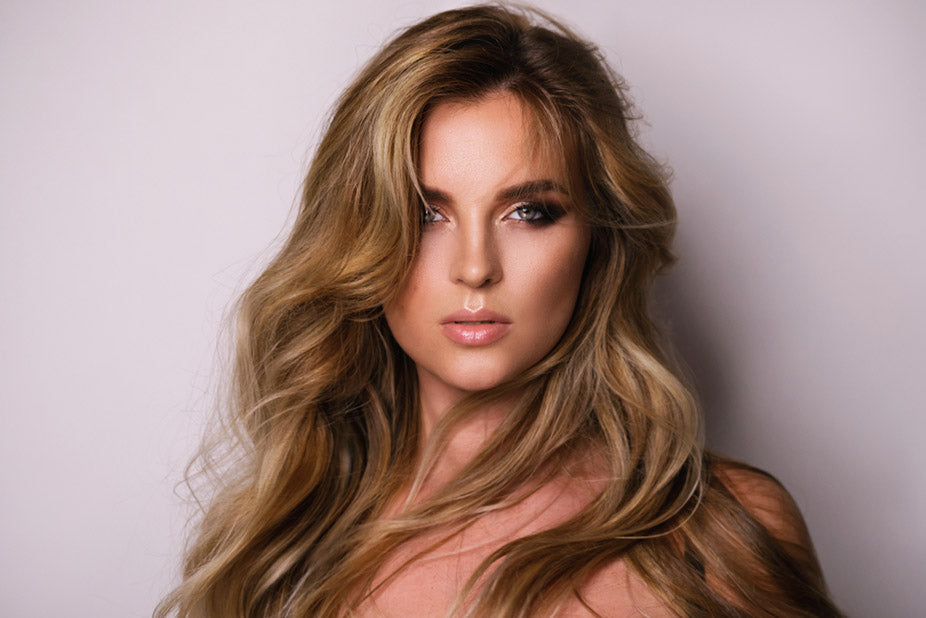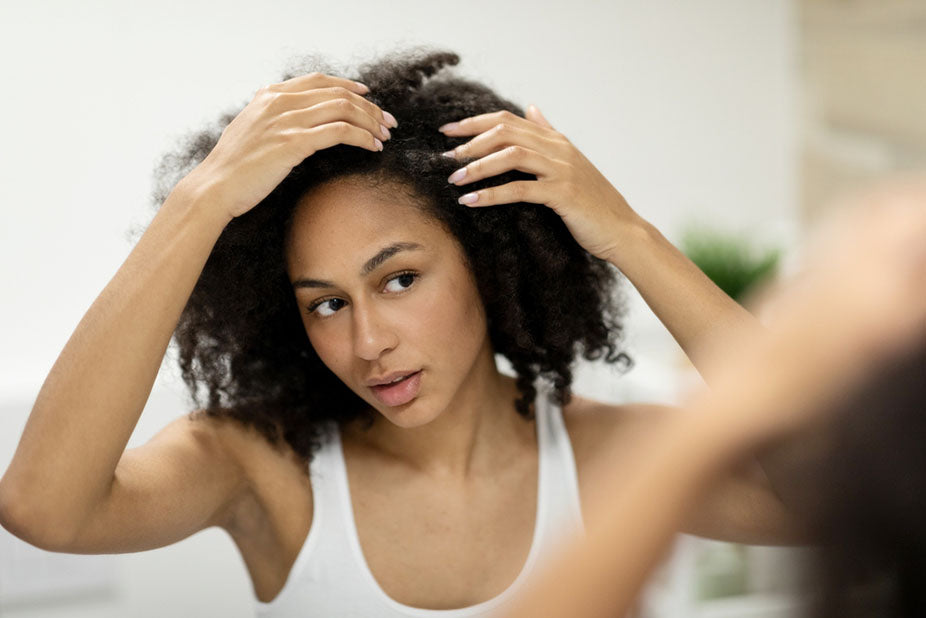
While we believe that anyone can achieve salon-worthy results at home, when it comes to hair color, there are a couple of essential details to nail out before you even begin mixing your dye. Even if you already have a particular hue in mind, you should identify your hair color level before making a final decision. It’s one of the reasons why we ask you this question in our color quiz. What level is my hair color, you ask? Don’t stress. We’ve got pro tips to help you figure it out.
Take Our Hair Color Quiz to Find Your Ideal Shade
What’s a Hair Color Level and Why Should I Care?
Your hair color level refers to how light or dark your shade is, regardless of tone. Pros use a universal level system to standardize a brand’s hair color charts to prevent blurred lines — “medium blonde” could mean different things to different people. In order to pick the perfect shade, it’s important to understand the level system manufacturers use to communicate this information. Hair color levels typically range from 1 to 10, with 1 being the darkest (black) and 10 being the lightest (lightest blonde). This “level” appears on the hair color box, so you know how dark or light your final result will be.
Knowing the level of your natural hair color, or what we colorists refer to as your starting level, is important because it contributes to your final result. Bottom line - it’s important to know where you are starting - so you can select a shade in a level that is achievable for you.
NATURAL LEVEL + HAIR DYE = FINAL RESULT
What is My Natural Level?
You can find out your natural level by matching a root area of your crown, a section that hasn’t been colored (often called re-growth), to one of the swatches on the natural level scale (shown below) Here are some tips from the Pro’s to ensure you determine it correctly:
Standing in natural light, grab a section of hair, as far back at the crown as you can hold up and actually see. Hold it up and away from the rest. You want the most accurate match, and hair tends to look darker when layered against other hair. The crown is critical. If you look at the roots along your hairline, you might be fooled into thinking your level is lighter than it is because of sun exposure.
If you see a lot of grays, do your best to decipher any color you can. Remember that our hair typically changes as we age, so those blonde curls you had as a child aren’t an accurate representation of your current shade. Next, determine which one of these hair color levels is closest.
Level 1: Black
Level 2: Darkest Brown
Level 3: Dark Brown
Level 4: Medium Brown
Level 5: Light Brown
Level 6: Dark Blonde
Level 7: Medium Blonde
Level 8: Blonde
Level 9: Light Blonde
Level 10: Lightest Blonde

How to Take into Account Gray and Why:
As with levels, it’s helpful to determine how much gray you have and put it into terms of a percentage. See below for visual examples of different percentages of gray. This is important because certain hair color shades will have tips or directions to ensure optimal gray coverage and/or will let you know if they aren’t designed for high percentages of gray.

Hair Color 101: Choosing a Hair Color Based on Your Level
Now that we’ve established the basics of hair color levels, it’s time to determine which hair color level you want to achieve with the help of Zotos Professional hair color and lightening products.
When using hair color, if you are looking for a way to cover your grays, try our AGEbeautiful® permanent hair color. If you are looking for quenching color for curls, try out All About Curls® color with 360-degree coverage for protection, hydration, and radiant color! Whatever your hair color goals might be, we’ve outlined some quick tips below:
Goal: Match Your Color Level: If you are looking to match and enhance your natural level, choose a level one level lighter. If you aren’t certain, it’s always best to err on the lighter side (it’s much easier to go back in and color deeper than to lighten color that you feel is too dark).
Developer Choice (sold separately):
- Mix your color with 20 volume developer to ensure complete gray coverage
- Mix your color with 10 volume developer if gray coverage is not a concern.
- (2 oz of color + 2 oz of developer; 1:1 Ratio)
Goal: Go Lighter: It’s best to choose a shade that’s relatively close to your natural/starting level if brassy/warm tones aren’t desired. (within 2 levels). However, if you fall within natural/starting levels 6 or lighter (and gray coverage is 25% or less), you can use AGEbeautiful®'s High Lift Ultra Blonde Shade that lifts up to 4 levels. Any lighter than that, turn to a lightener like AGEbeautiful® Ultra Bond™ to do the job.
Developer Choice (sold separately):
- Mix your color with 20 volume developer;
- Pro Tip: If coloring for the first time (no existing color), use 20 volume at roots; and re-mix a separate batch with 30 volume to apply midshaft-ends (this will provide an even, lighter result due to the heat from the scalp)
- (2 oz of color + 2 oz of developer; 1:1 Ratio)
If using AGEbeautiful® High Lift Ultra Blonde Shade: Mix your color with 40 volume developer if gray coverage is not a concern.
- (2 oz of color + 4 oz of developer; 1:2 Ratio)
- PRO TIP: Permanent hair color can’t lighten hair that’s already been color-treated, so if that’s your goal, you’re better off choosing bleach. For more information on this topic, check out our blog, Can I Lighten Already Colored Hair?
Goal: Go Darker: We recommend only going one shade darker at a time. Gradually coloring a deeper hue will help you adjust to your new shade.
- Mix your color with 20 volume developer to ensure complete gray coverage.
- Mix your color with 10 volume developer if gray coverage is not a concern.
- (2 oz of color + 2 oz of developer; 1:1 Ratio)
Choose Tones That Flatter Versus Fail:
Tones range from warm to cool and are represented by the letters you see on the packaging. They are what give a hair color its overall shade characteristic. They are designated by the letters that appear next to the number/level. The dominant tone will be the first letter, the secondary tone is the second letter, and some have a tertiary (just a hint of a tone), which is the third letter.
Warm tones appear lighter and brighter and fall under Red/Copper/Gold (includes WB/Warm Beige). Cool tones appear darker to the eye and are often referred to as Ash/Violet (includes Blue, Mahogany).
Neutral is neither warm nor cool. It is an ideal tone to choose to ensure complete gray coverage and to prevent off/unwanted tones when covering high percentages of gray.
How to Use Tone to Your Advantage:
If you are going lighter than your natural level, warm tones will occur on their own. You can choose to enhance/bring out more “warmth” by selecting a warm shade OR counteract/tone down expected warm/brassy tones by selecting a “cool” shade in your desired level.
For example, A level 3 natural level desires a level 5 is light brown. When going lighter, warm tones (or an underlying pigment, if you want to use the professional term) are exposed during processing. So, you’d want to choose either enhance the warm tones with a shade like 5G (Gold) or neutralize it with a cool-tone shade like 5A (Ash)
When coloring high percentages of gray (50% or more), a shade with some Neutral should be chosen like our Age Beautiful (™) NNG or NNV collections, or intermixed with vibrant tones such as B (Blue), V (Violet), R (Red) or RR (Red Red) in the same level to ensure a vibrant color plus complete gray coverage without unwanted “off tones” (example 1 oz 5N + 1 oz 5RR mixed with 2 oz 20 volume developer).
Our helpful shade charts showcase every level and possible tone that we offer. Combining the level number with your desired tone will give you your ideal color shade.
Check Out Our AGEbeautiful® Shade Chart Here or our
All About Curls® Shade Chart Here
We aim to make it as easy as possible for you to achieve salon-worthy results at home, so we’re here to help address any questions or concerns. Along with our color quiz, salon professional advice is available Monday-Friday, 9:00 a.m. - 8:00 p.m. EST. Call, Chat, Email, or Text us — we’ve got you!


